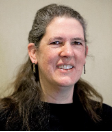Karen Harper
Through my participation in events held by the Canadian Association of University Teachers (CAUT), I have learned a bit about ‘indigenizing the academy’. CAUT (and others) advocate indigenization through ‘a commitment to undertake proactive measures aimed at restoring, renewing, and regenerating Indigenous practices, languages, and knowledge’. They suggest that Aboriginal content and Indigenous knowledge should be incorporated in curricula but should not result in tokenism, distortion or cultural appropriation.
Although indigenizing the academy should be done at a scale of the entire university by providing appropriate resources, I have been wondering how I might be able to add Indigenous content in my own courses. Indigenization involves expanding the academy’s conceptions of knowledge to include Indigenous perspectives in transformative ways and part of this process is to spread Indigenous knowledge beyond its foundational area to other parts of the institutionI have asked myself: how can I as a non-Indigenous person lacking traditional knowledge teach any indigenous content?
A few years ago a couple of friends (including Lauren Mckenzie, CUPE 3912 President, who asked me to write this article) recommended the book Braiding Sweetgrass by Robin Wall Kimmerer. The author is a plant ecologist, professor and environmental scientist, just like me, but she is Potawatomi, born in the United States. The book explains that the braid represents the weaving together of scientific knowledge, Indigenous ways of knowing, and stories. The author uses the three strands to present and discuss ecology and environmental science from these different perspectives. Since I teach in the Environmental Science program at Saint Mary’s University, I thought that this could be a way of including indigenous knowledge in my course.
As I told my students, my idea was to have the author teach us Indigenous knowledge from her perspective, and to have my role as the instructor to be to lead the discussion about her teachings. I assigned several appropriate chapters throughout the course including Skywoman falling, Sitting in a circle, Maple sugar moon, A mother’s work, Old-growth children and The teaching of grass. The book is available online through the SMU library with no restrictions, which made it easy to add to the course readings.
The students and I thoroughly enjoyed reading the chapters, which read more like a novel than a textbook. I came up with questions that I think highlighted the different perspectives portrayed in the chapters and related them to the course material. We had some good discussions as well, particularly at the start of the course. I also included questions specifically on the assigned chapters in each test to make sure the book was an integral part of the course. One of the questions on the final exam (given to the students in advance) was to explain two environmental issues from the chapters we read from the three perspectives.
I should note that including this book as reading material was my own initiative. I did not go through any consultative process or attend any workshops. Perhaps I should have but it seemed to make sense to incorporate Braiding Sweetgrass into the course. This small step felt like I could make a small difference on my own without imposing on others. I think I made a slight impression on SMU students. I believe that my course was enriched by adding new perspectives. The few students I have talked to who actually read the book agreed.
In solidarity,
Karen Harper
 Karen Harper continues her dedication and commitment to helping improve working conditions for CUPE 3912 members and contract academic staff across Canada through her roles as a member of the CAUT CAS committee (Canadian Association of University Teachers Contract Academic Staff committee). She also recently joined the committee for COCAL (Coalition of Contract Academic Labour). Her experience with CAUT is extensive, having attended numerous Council meetings, forums (for presidents, bargaining officers), webinars and workshops. Within CUPE 3912, Karen was Communications Officer from 2016 to 2019 followed by President from 2019 to 2022. She currently still helps CUPE 3912, particularly with mobilization for SMU. Karen has taught in Biology at the Mount; in Biology, Management and Environmental Science at Dal; and in Applied Science, Biology, Geography and Environmental Science at SMU. Her main motivation for being involved in the labour movement is to try to get more paid research opportunities for CAS – see her article ‘Working part time in name only’ in the CAUT March 2018 Bulletin. Her research focuses on vegetation at forest edges.
Karen Harper continues her dedication and commitment to helping improve working conditions for CUPE 3912 members and contract academic staff across Canada through her roles as a member of the CAUT CAS committee (Canadian Association of University Teachers Contract Academic Staff committee). She also recently joined the committee for COCAL (Coalition of Contract Academic Labour). Her experience with CAUT is extensive, having attended numerous Council meetings, forums (for presidents, bargaining officers), webinars and workshops. Within CUPE 3912, Karen was Communications Officer from 2016 to 2019 followed by President from 2019 to 2022. She currently still helps CUPE 3912, particularly with mobilization for SMU. Karen has taught in Biology at the Mount; in Biology, Management and Environmental Science at Dal; and in Applied Science, Biology, Geography and Environmental Science at SMU. Her main motivation for being involved in the labour movement is to try to get more paid research opportunities for CAS – see her article ‘Working part time in name only’ in the CAUT March 2018 Bulletin. Her research focuses on vegetation at forest edges.